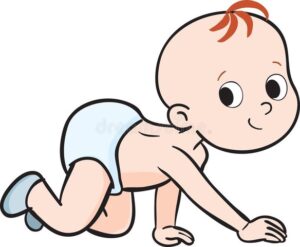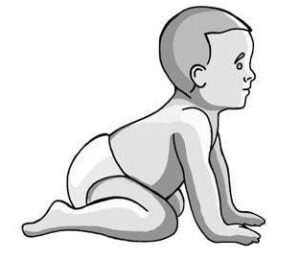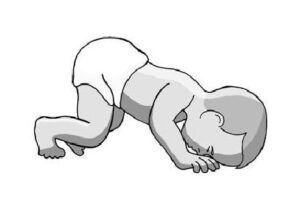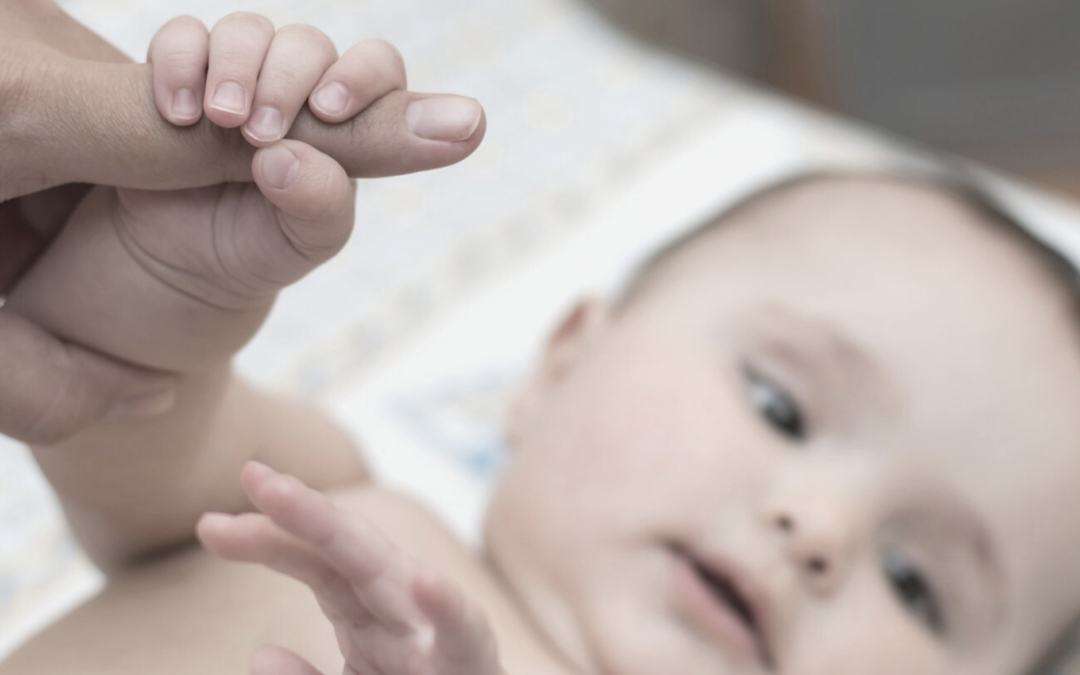In the first blog on primary reflexes, we explored the basis of what primary reflexes are, how they happen to be and what their general involvement is in children and adult motor functions. Now we will look specifically into how some primary reflexes can be responsible for a child’s, and perhaps an adults, ability to sit still, straight and comfortable and how it might contribute to learning difficulties and even ADHD when not integrated.
ADHD is the most prevalent childhood psychiatric disorder in Canada according to CADDAC (Center for ADHD awareness, Canada). Up to 4% of adults and 5% of children worldwide are affected by it. Children, adolescents and adults with untreated ADHD are at a greater risk for:
- Learning difficulties, less academic success, school dropout, and fewer years of schooling
- Additional mental health disorders and problems with self esteem
- Substance abuse and a greater chance of becoming involved in the justice system
- More accidents and sustaining injuries, more automobile accidents and earlier death
For all of these reasons, it is important to look at what we can do early on at home and with the different therapists involved to alleviate to difficulties involved with ADHD.
Sitting still is not so easy
One of the basic skill of learning is to sit still in a position that is comfortable enough. In doing so, your brain can pay attention to what is happening in the outside of your body, the classroom and to the voices being heard. The frontal lobe of the brain processes the information and then stores it in the temporal lobe and hippocampus for long and short term memory. Et voila! But if you are uncomfortable and squirming around on your chair, your brain can only pay attention to so much of what you have to learn.
STNR reflex
The STNR reflex, or Symmetrical Tonic Neck Reflex, is a complex and important reflex that emerges at the 13th week in-utero and continues its development after birth. It becomes active between the 6th and 10th months of age and will be integrated into the whole motor function system around the 10th month. It is a sequence of 3 positions, that will seem simple to many of you especially the yoga lovers, but can surprisingly be impossible to do correctly if non-integrated. The sequence is very important for the development of eye-head-neck-arm-trunk-leg coordination and differentiation. So basically, the entire body.
Position 1 is close to what many of you know as child pose but the arms are bent by the babies side, the bum is up in the air. The downward head movement causes a flexion of the elbows.
Position 2 is the Sphinx. Upward head movement causes the extension of the arms and elbows and flexion of the lower limb in a sitting position.
Position 3 on all four. The extension of the neck leads to extension of the arms and elbows. The trunk can extend or flex while the knees and hips retain an all four position.



Position 1 Position 2 Position 3
Before the age of 10 months, an extension or flexion of the head will cause a response in the upper and lower extremities but after that age, once the reflex is integrated, the child is able to differentiate movements to accommodate its daily activities. The problems happen when they cannot dissociate the movement of the head with the rest of the body.
 As seen to the right, the child cannot hold his arms straight without extending the legs or extending the arms without rolling the trunk forward. Reading or writing then becomes unenjoyable for the child. The development of peripheral vision as well as depth perception, balance, spatial and temporal awareness is triggered by this reflex which can in turn affect the child’s athletic development and enjoyment in turn affecting their social involvement. Children with positive STNR will often prefer reading on the floor on their tummy with the legs extended or sitting at their desk with the legs anchored behind the chair’s legs when the arms are bent.
As seen to the right, the child cannot hold his arms straight without extending the legs or extending the arms without rolling the trunk forward. Reading or writing then becomes unenjoyable for the child. The development of peripheral vision as well as depth perception, balance, spatial and temporal awareness is triggered by this reflex which can in turn affect the child’s athletic development and enjoyment in turn affecting their social involvement. Children with positive STNR will often prefer reading on the floor on their tummy with the legs extended or sitting at their desk with the legs anchored behind the chair’s legs when the arms are bent.
Hand Grasp Reflex

Hands grasp is a simple but important reflex than emerges at 10-11 week in-utero and is already matured by the first week of life. It is active throughout the first year of life and become the natural movement of the hand thereafter. When giving your finger to a baby’s hand, he/she will automatically grab the finger and clench all fingers AND thumb around. The movement of the thumb is very important as it is what really helps with prehension later on and with the development of hand strength.
Many children and later on, adults will not wrap the thumb around and would leave it along the palm if asked to make a fist. This reflex is important in learning, speech and communication skills as it related to eye-hand-mouth coordination going from something we see and want to take with our hand to bring to our mouth, which also affects the movement of our mouth and tongue, which will be important later for speech.
 Holding a pen properly is determined by this reflex. Children who cannot hold a pen properly will activate compensation reflexes, such as Hand Pulling, in order to write. They can become uncomfortable in a sitting forward position with writing and start sitting sideways. This combined with a poor STNR reflex and you have a child that cannot focus with his eyes on what is happening in the class. The eyes will most likely move constantly and make listening a very challenging skill. Retention will be quite poor.
Holding a pen properly is determined by this reflex. Children who cannot hold a pen properly will activate compensation reflexes, such as Hand Pulling, in order to write. They can become uncomfortable in a sitting forward position with writing and start sitting sideways. This combined with a poor STNR reflex and you have a child that cannot focus with his eyes on what is happening in the class. The eyes will most likely move constantly and make listening a very challenging skill. Retention will be quite poor.
ADHD and reflexes
ADHD cannot be attributed to only one problem, it is usually a combination of factors but as a rule of thumb, the more unintegrated reflexes as the two mentioned above, the better the chance of having a squirmy, fidgety, non attentive child in class. Many parents will believe their child is just wanting to be active and move all the time but many children will move because it is deeply uncomfortable to stand or sit still. Many of these children will be better with kinaesthetic learning, which is not a bad thing in itself but can be stigmatizing within the academic system.
ADHD and Osteopathy
Dr. Viola Frymann was a pioneer doctor of Osteopathy who passed away a few years ago. She spent most of her career in the Osteopathic study and treatment of babies and children. According to her, a great majority of children with ADHD and learning disabilities will present with what Osteopathic Practitioners would describe as increased tension in the cranium, especially around the base of the skull, the foramen magnum, the brain stem, the cerebellum, the meninges and various other sites. According to her, these osteopathic tensions most often come from difficult birth, both natural and assisted by various means such and ventouse, forceps, suction and caesarean section. She believes that the increase in assistance in births is contributing to the rising numbers of children with the aforementioned difficulties and that babies would all benefits from gentle cranial treatment soon after birth.
Reflexes and Osteopathy at Ananta
Primary reflexes first need to be tested. They are fairly simple movement that are asked to be performed by the patient and led by the practitioner. If the reflexes is still present in childhood or adulthood, the practitioner will evaluate which sequence of the reflex needs to be retrained. The training is again simple and gentle, but challenging for someone who hasn’t integrated these movements. After, or before, the Osteopathic Practitioner do what many of you are more familiar with, an osteopathic head to toe evaluation to find what can also contribute to the body’s inability to find balance, structure and regulation. The combination of reflex and osteopathy can be very beneficial for children with ADHD.
It is with great pleasure that I can offer to help the little and not so little patients with combining the retraining of reflexes and osteopathy at Ananta. If you notice anything with your child, but also with yourself as an adult or have any questions regarding anything mentioned above, please feel free to reach out anouk@anantaosteopathy.com.
Our Osteopathic Practitioners do not diagnose or practice medicine, nor do we attempt to treat disease. If you are concerned about any medical pathology, ADHD and/or disease, always consult your physician prior to exploring Osteopathic Manual Therapy.


This is a great guide for early learning for child reflex. Thank you for sharing this info.
Thanks for having a read and glad it was offered some insight.